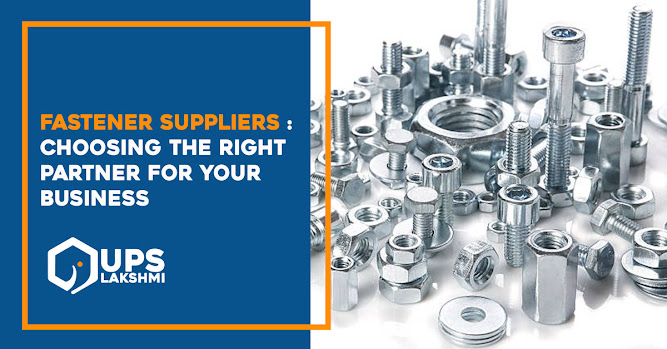Shoulder Bolts: Uses, Advantages, and Installation Techniques
Shoulder bolts, also known as shoulder screws
or stripper bolts, are a versatile class of fasteners that find widespread
applications across various industries. These unique bolts feature a
cylindrical, unthreaded section (the shoulder) between the head and the
threads. In this blog post, we'll explore the uses, advantages, and
installation techniques of shoulder bolts-
Uses of Shoulder Bolts
Shoulder bolts are designed to perform specific functions that set them apart from traditional screws and bolts. Here are some common uses:
1. Precise Spacing: One of the primary purposes of shoulder bolts is to provide accurate and consistent spacing between components. This is crucial in applications where precise alignment is necessary, such as in machinery, manufacturing equipment, and automotive assemblies.
2. Pivot Points: Shoulder bolts are often employed as pivot points or hinge pins. The smooth, unthreaded shoulder serves as a bearing surface, reducing friction and enabling smooth rotation or movement of parts. This makes them suitable for doors, lids, and other moving mechanisms.
3. Tool and Die Fixturing: In tool and die manufacturing, shoulder bolts are used to secure and precisely locate dies, molds, and fixtures. The non-threaded section ensures that the components remain in the correct position during machining or assembly.
4. Shaft Extensions: When a project requires extending a shaft or axle, shoulder bolts can be used to achieve this securely and accurately. The threaded end is fastened to the existing shaft, while the shoulder provides stability and support for the extended part.
5. Electronics and Circuit Boards: Shoulder bolts are commonly used in electronics and electrical applications to secure components in place without damaging delicate circuit boards. The non-threaded portion provides a protective barrier, preventing overtightening and potential damage.
Advantages of Shoulder Bolts
Now, let's delve into the advantages that shoulder bolts offer:
1. Precision: As their name suggests, shoulder bolts are precision-engineered fasteners. Their design ensures consistent, accurate spacing and alignment, making them ideal for applications where precision is critical.
2. Reduced Wear and Friction: The smooth shoulder of these bolts minimizes wear and friction, making them perfect for moving parts and pivot points.
3. Load Distribution: The shoulder acts as a load-bearing surface, distributing stress and preventing localized pressure points. This is especially valuable in applications where load distribution is essential, such as aerospace and automotive engineering.
4. Vibration Resistance: Shoulder bolts are less susceptible to loosening due to vibrations, thanks to their secure fit and reduced thread engagement compared to standard bolts. This feature enhances their reliability in dynamic environments.
5. Protective Isolation: In sensitive applications, the non-threaded shoulder isolates components from direct contact with the threads, protecting them from damage, corrosion, or contamination.
Installation Techniques
Proper installation of shoulder bolts is crucial to harness their benefits effectively. Here are the steps to install shoulder bolts correctly:
1. Choose the Right Bolt: Select a shoulder bolt with the appropriate size, length, and material for your specific application. Consider factors such as load requirements, environmental conditions, and the need for corrosion resistance.
2. Preparation: Ensure that the components you intend to fasten with the shoulder bolt are clean and free from debris or contaminants. This will help maintain the integrity of the assembly.
3. Align Components: Position the components that will be connected by the shoulder bolt, ensuring they are correctly aligned. The shoulder bolt's role is to maintain this alignment precisely.
4. Insert the bolt: Insert the shoulder bolt into the pre-drilled hole, ensuring that the threaded end engages securely with the receiving component. Use an appropriate torque wrench to tighten the threaded portion to the desired torque value.
5. Stop at the Shoulder: Do not over-tighten the bolt. The shoulder should not come into contact with the receiving component; it should remain free to perform its function of spacing or pivoting.
6. Check Alignment: After installation, double-check that the components remain properly aligned and that the shoulder bolt is correctly seated. Any misalignment or improper installation should be corrected promptly.
7. Secure with Locking Mechanisms: In applications prone to vibration or movement, consider using locking mechanisms such as threadlocker adhesive or locking nuts to ensure the bolt remains in place.
In conclusion, shoulder bolts are invaluable fasteners in various industries due to their precision, load distribution capabilities, and resistance to wear and friction. Their unique design and advantages make them a top choice for applications that demand accuracy and reliability.
For high-quality shoulder bolts and precision screws, look no further than Universal Precision Screws. As a leading bolt manufacturer, they are committed to providing top-notch fastening solutions that meet your specific requirements. Whether you need shoulder bolts for machinery, electronics, or any other application, they have the expertise and products to support your needs. Choose Universal Precision Screws for reliable, precision-engineered fasteners that get the job done. To know more, visit- https://www.upsind.com/




Comments
Post a Comment